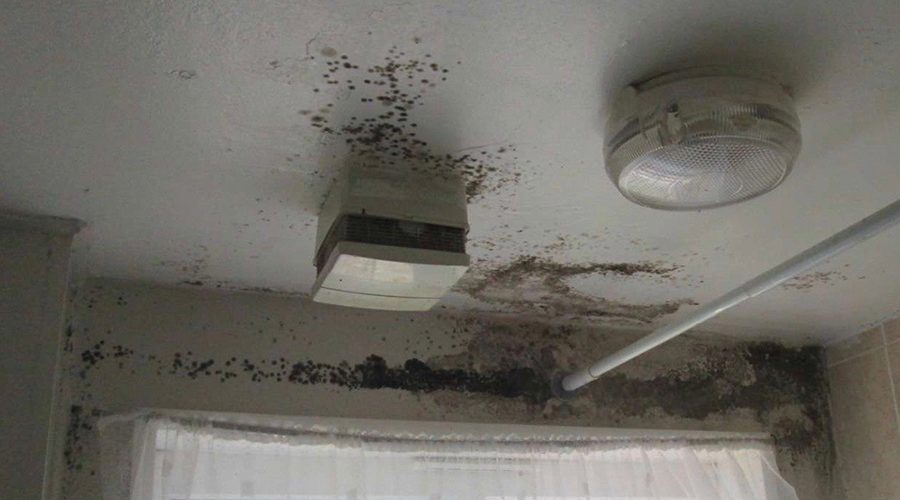Managing budgets and making the right maintenance and housing improvement decisions at the right time is crucial for social housing providers – and that’s where CIT (Consultancy, Investigation, Training) is helping advise and guide clients, says Rob McCormack, Director of CIT.
CIT

Rob McCormack Director of CIT (Consultancy, Investigation, Training), has more than 15 years’ experience in the energy and construction sectors within corporate and contracting environments, delivering commercial projects and UK Government legislation.
CIT’s main aim is to assist with housing improvement investment decisions and problems associated with poorly installed or inappropriate insulation retrofits, tackling issues identified in a timely and cost-effective way.
It’s a mission that takes the team the length and breadth of the UK assessing the suitability of housing for insulation installations, investigating reports of various housing defects and surveying high-rise tower blocks with drones, delivering the best possible advice for clients. And that’s when the team isn’t training local authority and housing association housing teams, impartially advising insurance companies and Government departments or delivering keynote speeches at
industry seminars.
It’s a wide-ranging remit but one that we relish. We deal with a broad range of clients both in terms of size, requirements and the type of properties they are responsible for. Some are organisations with fairly modern housing stock; others are in charge of thousands of homes of all ages, types and condition. Each requires a bespoke service from our specialist surveyors, and we really enjoy building relationships with each client, quite often initially assisting them with identifying resolutions for legacy issues and then working with them on an ongoing basis to enable better decision-making and housing budget management.
Our services have been designed specifically to address growing inconsistencies around – and the consequences of – inappropriate insulation retrofits or improperly installed insulation products. Our aim is to inform and educate, raising industry standards. We’ve found that it’s not unusual for housing providers facing issues with CWI or EWI, for example, to use the same contractor to diagnose the problem and subsequently carry out the remediation works. This may not solve the problems being faced, and it is not good practice – we are trying to raise awareness of this with our clients.


360° view
The one common thread that unites organisations contacting CIT is a problem or challenge – and the key to CIT’s success lies in its ability to take a 360° view of the situation and recommend the most appropriate action. We’re not a building contracting company or insulation provider/installer; we are independent and really very skilled at assessing and evaluating housing stock issues and putting recommendations forward. This allows us to be completely impartial and only recommend resolutions that we feel are needed. We stand back from a situation to ensure that our advice is the most appropriate and cost-effective. We are very aware of the budgetary confines of social housing providers and, therefore, our conclusions and recommendations have to be realistic and workable.
Scope
A recent project in Scotland is a good example of CIT’s scope of work. Properties in Ayr required repairs and energy efficiency upgrades ahead of potential inclusion to South Ayrshire’s HEEPS: ABS funding programme; some 35% of households in the area are estimated to be in fuel poverty. However, the Energy Agency – the managing agent for South Ayrshire Council – was uncomfortable placing the property assessment onus on contractors. It, therefore, called in CIT to survey almost 200 flats and prepare in-depth condition reports.
Energy Agency Project Co-ordinator, Andrew Filby, said: “We realised the homes would need technical assistance to bring them up to the condition required for external wall insulation (EWI) to be considered. For the first time, due to the complicated nature of the works, we decided to appoint a surveyor to assess the properties and provide an evidence base and conclusions to tell us what work we would need to put in place.”
CIT surveyed the coastal 1940s and ‘50s properties to determine which insulation approach was suited to each, establish if works were required before insulation solutions were installed and carry out due diligence to ensure the council gained the most from its investment.
“The mixed-tenure nature of the blocks in this area, coupled with high levels of deprivation, has limited the amount of maintenance the council has been able to undertake over the last 40 years due to lack of owner buy-in,” added Mr Filby. “This has led to the deterioration of these homes, which now have multiple external fabric issues. Build quality, and the quality of retrofit insulation measures attempted a decade ago, is also a concern. By bringing in a specialist, we can be confident that the solution proposed will make the biggest impact on these homes and provide longevity to the life of the building fabric,” he said.
Two clusters of properties, for example, were suspected of having no damp course, while failures in the cavity construction were also identified. In-depth remediation work was identified as required to refill the cavities and refit wall ties before EWI could be installed. CIT provided a clear direction for remedial works.
Although CIT is focused on EWI, CWI and other insulation approaches, its assessments are a holistic property evaluation, from roof ridge tile to damp-proof course, identifying building defects which may include defective guttering, eroded mortar joints, cracked render, voids in cavity wall insulation and facilitating the correct remediation and investment for medium- and high-risk properties.
“By providing a comprehensive report, our client can help its contractors deliver with the required level of proficiency and integrity,” added Rob. “The legacy of our input into the South Ayrshire project is that the council can make the right investment at the right time. Assessing the suitability of properties is key to ensuring the correct housing improvement investment decisions are made.”






